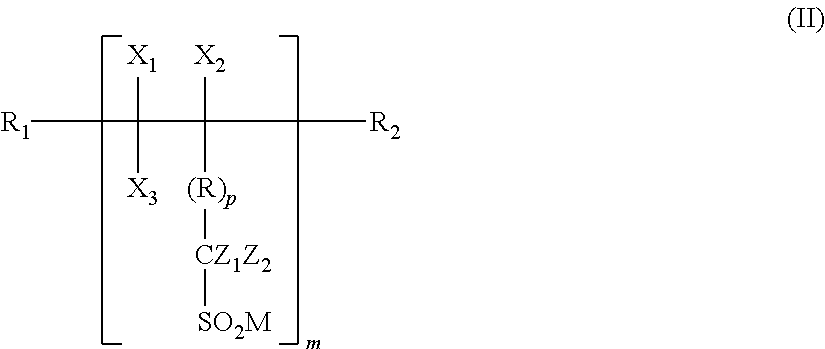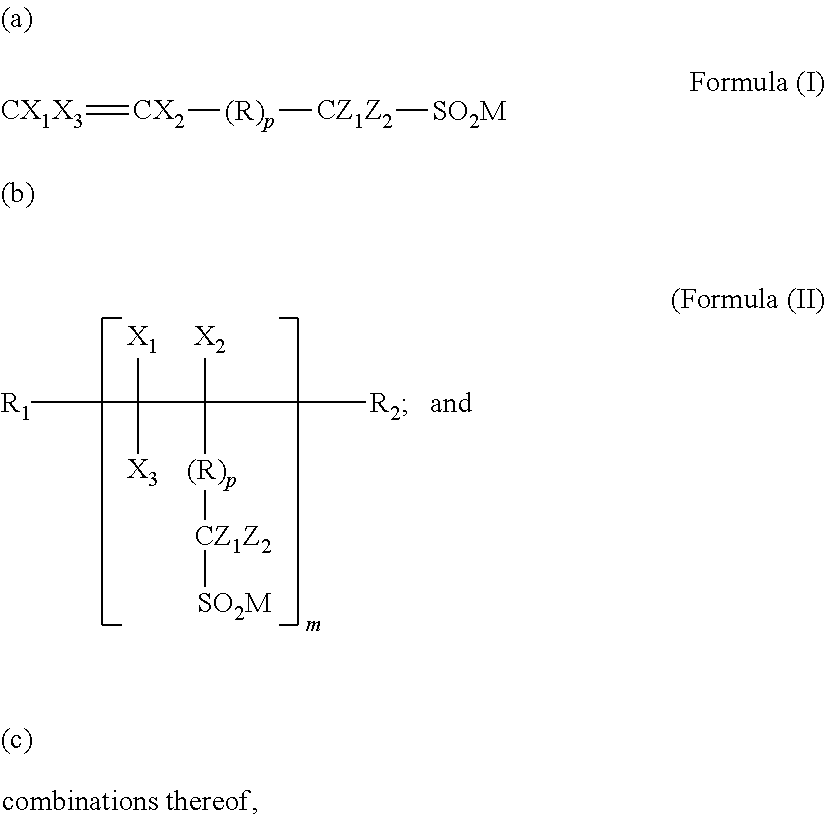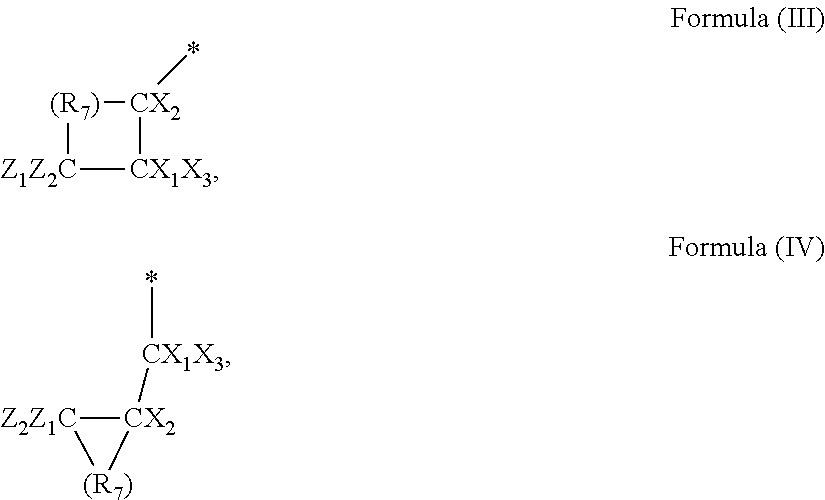Processing aid composition derived from a sulfinate-containing molecule
a technology of sulfinate and processing aid, which is applied in the field of meltprocessible polymer compositions, can solve the problems of loss of surface gloss, creating an entirely new set of problems, weakening of bubble walls, etc., and achieves the effects of no melting point, clear detection of melting point, and hardly showing melting poin
- Summary
- Abstract
- Description
- Claims
- Application Information
AI Technical Summary
Benefits of technology
Problems solved by technology
Method used
Image
Examples
example 1
[0161]A concentrate comprising 3% of a branched elastomer FKM4 with a Mooney viscosity of 55 was prepared according to the method described above. It was tested on the Keifel film line as described, at a level of 350 ppm, in a 0.9 MI LLDPE formulation containing 6000 ppm of talc and 1000 ppm of erucamide. Melt fracture was eliminated in 50 min.
example 2
[0164]A branched elastomer FKM6 with a Mooney viscosity of 50 was prepared.
TABLE 2% Melt Fracture Remaining vs. TimeTime (min)EX1CE1CE2010010010010100100100207710078301860740221250090.5603070180090100110120
example 3
[0165]A concentrate comprising 1.5% of a branched elastomer FKM4 and 1.5% of polyethylene glycol (3% PPA) was prepared according to the method described above. It was tested on the Keifel film line as described, at a level of 250 ppm, in a 0.9 MI LLDPE formulation containing 7500 ppm of talc and 1500 ppm of erucamide. Melt fracture was eliminated in 80 min.
PUM
| Property | Measurement | Unit |
|---|---|---|
| LCBI | aaaaa | aaaaa |
| MFI | aaaaa | aaaaa |
| MFI | aaaaa | aaaaa |
Abstract
Description
Claims
Application Information
 Login to View More
Login to View More - R&D
- Intellectual Property
- Life Sciences
- Materials
- Tech Scout
- Unparalleled Data Quality
- Higher Quality Content
- 60% Fewer Hallucinations
Browse by: Latest US Patents, China's latest patents, Technical Efficacy Thesaurus, Application Domain, Technology Topic, Popular Technical Reports.
© 2025 PatSnap. All rights reserved.Legal|Privacy policy|Modern Slavery Act Transparency Statement|Sitemap|About US| Contact US: help@patsnap.com



